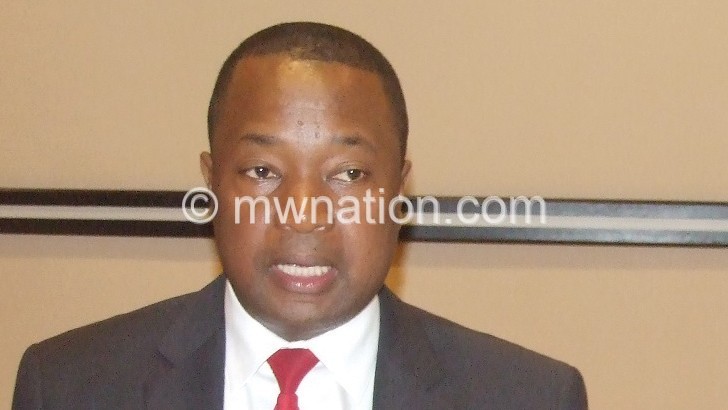Reserve bank maintains policy rate
The Reserve Bank of Malawi (RBM) on Wednesday maintained the policy rate at 13.5 percent, a move Consumers Association of Malawi (Cama) says will calm the market.
RBM Governor Dalitso Kabambe made the announcement in Lilongwe yesterday after a two-day meeting of the Monetary Policy Committee (MPC).

He said all measured fundamentals show the country’s economy has remained resilient; hence, the decision.
The governor said the MPC also maintained the Lombard Rate at 0.4 percent above the policy rate and the Liquidity Reserve Requirement (LRR) on local currency deposits at five percent while that of foreign currency deposits was also maintained at 3.75 percent.
Said Kabambe: “In arriving at this decision, the committee observed that although rising maize prices may marginally push up headline inflation in the near-term, this elevation is deemed temporary and does not pose a risk to the medium-term inflation objective of five percent by 2021.
“The economy has displayed notable resilience despite the adverse effects of Cyclone Idai and the weak performance of tobacco exports in 2019. Real gross domestic product [GDP] continues to recover and is projected to grow by five percent in 2019”.
He said inflation rate has remained in single digit and was recorded at 9.3 percent in the third quarter of 2019 while the exchange rate remains firm, trading at around K740 to the dollar.
Lending rates continue to decline, according to Kabambe, with the base lending rate, now the reference rate, recorded at a historically low level of 12 percent.
Recovery in private sector credit is attributed to recent declines in interest rates as well as a generally improved macroeconomic environment.
Kabambe noted that while inflation is projected to average nine percent in 2019, it registered an increase in the third quarter of 2019 to 9.3 percent from nine percent in the second quarter.
The increase is on account of food inflation, which rose to 14.2 percent from 13.5 percent in the second quarter of 2019 and 9.9 percent in the corresponding quarter of 2018.
On rising food inflation, Kabambe explained that it has largely been driven by maize prices, which rose to K227 per kilogramme (kg) in October 2019 from K130 per kg in October 2018.
He admitted that food prices pressure may marginally intensify during the lean period, but is expected to decline at the onset of the next harvest season.
Non-food inflation, on the other hand, has remained low as it declined further to an average of 5.4 percent in the third quarter of 2019 from 5.5 percent in the previous quarter, largely owing to stability in the exchange rate.
Reacting to the development, Consumers Association of Malawi executive director John Kapito described it as positive news to consumers.
He said the fact that the central bank has maintained the policy rate, it means the market will be calmer going forward.
Said Kapito: “We would have loved to have the policy rate reduced further to allow many people to access bank loans. However, we hope that with the maintenance of the policy rate, it is good news to the business community.”
Economics Association of Malawi president Chikumbutso Kalilombe said it was expected the policy rate would be maintained because inflation has generally been held.
He, however, noted that despite a situation recently when inflation increased, it has eventually come down again coupled with stable fuel prices worldwide.
Said Kalilombe: “The policy rate decision is mainly dependent on inflation, which is the biggest determinant. This means that the lower interest rates are holding, the cost of borrowing remains low for now and we are hoping that if fundamentals continue to hold, eventually inflation goes down.
“The cost of borrowing might even reduce further because that’s the direction the central bank is driving at.”
RBM last cut the policy rate, the rate at which commercial banks borrow from the central bank as the lender of last resort, by 100 basis points from 14.5 percent from 13.5 percent.


